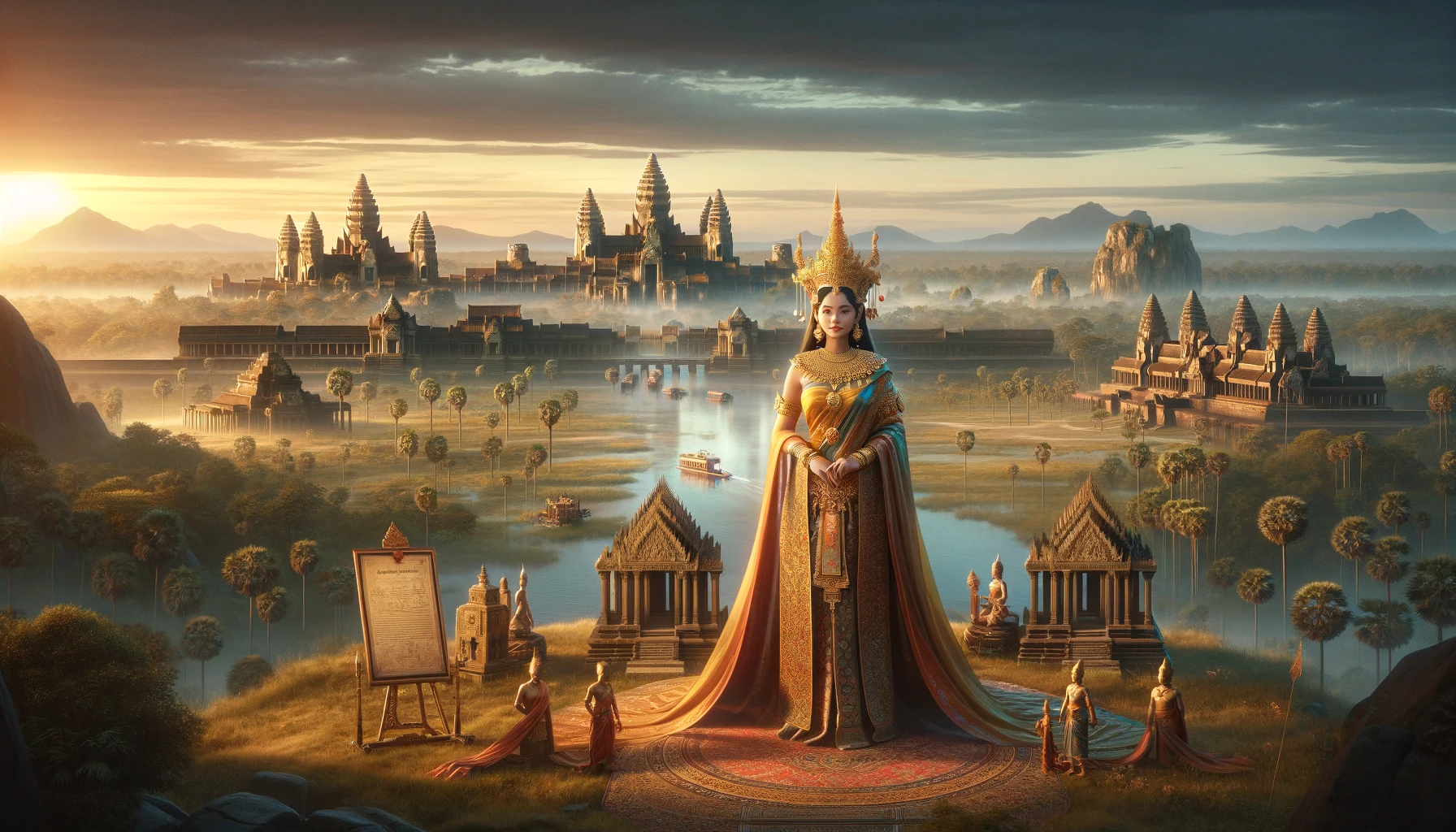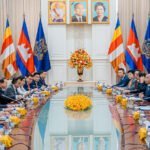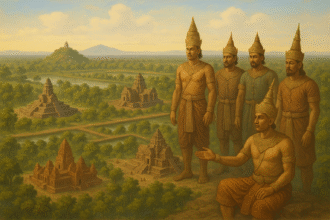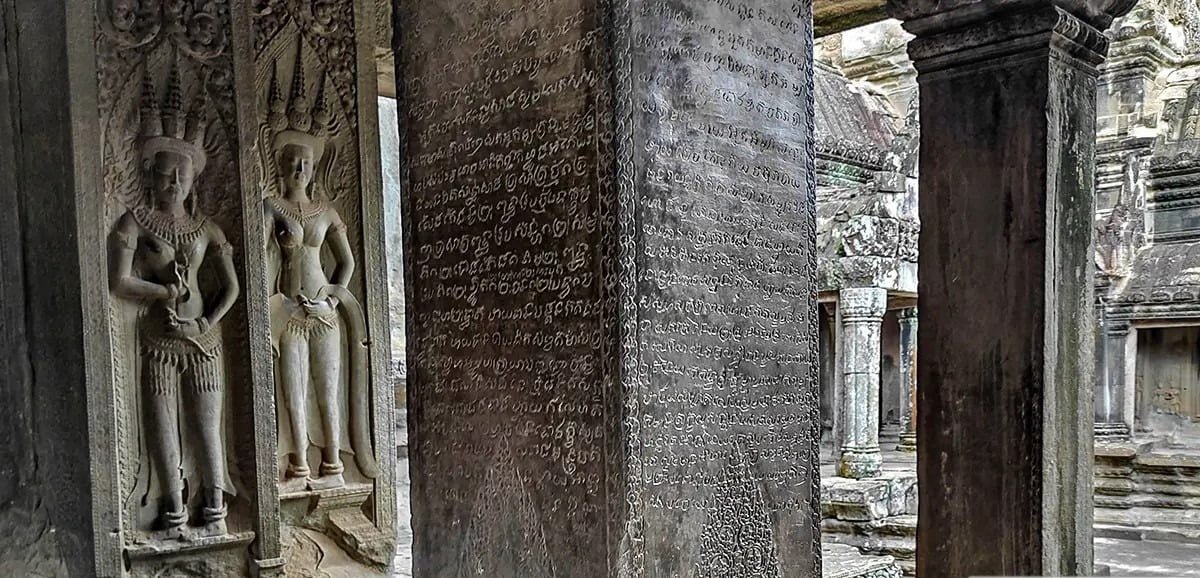The Khmer Empire, which flourished in Southeast Asia from the 9th to the 15th century, is evidence of the region’s rich cultural legacy and architectural wonders. At the heart of this empire, Queen Viralakshmi left an indelible mark as a powerful figure whose alliances and influence contributed to the empire’s prosperity and expansion.
Founded in 802 CE by Jayavarman II, the Khmer Empire flourished under the rule of various kings, including Suryavarman I. It was during Suryavarman I’s reign that he sought to solidify his power and extend the empire’s influence through strategic marriages. One such alliance was forged with Queen Viralakshmi, a relative of Harshavarman I and an elite member of the Vrai Kanlong polity.
Viralakshmi’s marriage to Suryavarman I represented more than a union of two individuals; it symbolized the forging of political alliances and the consolidation of power. Suryavarman I presented her with lavish gifts and bestowed great privileges upon her brothers, Narapatindravarman and Bhuvanaditya. This marriage alliance was not only a personal union but also a means to secure support and strengthen Suryavarman I’s position as king.
Viralakshmi’s role as queen went beyond her ceremonial duties. Her family’s lineage and connections within the royal court elevated her status, allowing her to exert influence in matters of governance and decision-making. The respect and reverence she commanded played a crucial role in shaping the policies and direction of the Khmer Empire.
After Suryavarman I’s death, Viralakshmi’s brother, Bhuvanaditya, ascended to the throne as Udayadityavarman II. This succession further cemented Viralakshmi’s influence within the ruling family. Her possible role as the mother or paternal aunt of Queen Vijayendralakshmi suggests a continued lineage of powerful women within the empire.
Beyond her familial connections, Viralakshmi’s contributions to the Khmer Empire are evident in the prosperity and expansion the empire experienced during her time. The empire’s architectural wonders, such as the majestic temples of Angkor Wat and Bayon, stand as a testament to the empire’s cultural and artistic achievements.
While historical records provide only a glimpse into Queen Viralakshmi’s life, her impact on the Khmer Empire cannot be overlooked. Her strategic alliances, influence within the ruling elite, and contribution to the empire’s growth solidify her status as a noteworthy figure in the annals of Khmer history.
As we explore the legacies of the Khmer Empire, it is important to recognize the significant role women like Queen Viralakshmi played in shaping the empire’s destiny. Their contributions, often overshadowed by the achievements of their male counterparts, serve as a reminder of the agency and influence women held even in male-dominated societies.
The story of Queen Viralakshmi serves as an inspiration, demonstrating the power of alliances, the importance of female leadership, and the enduring legacy of those who shape history.








